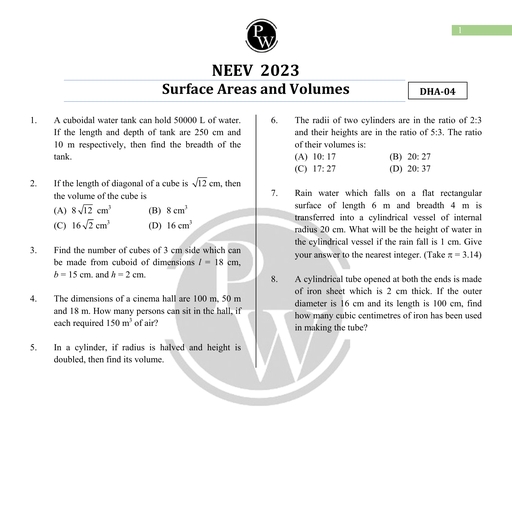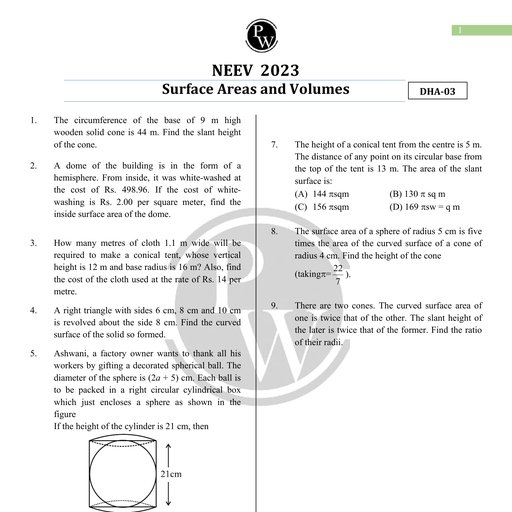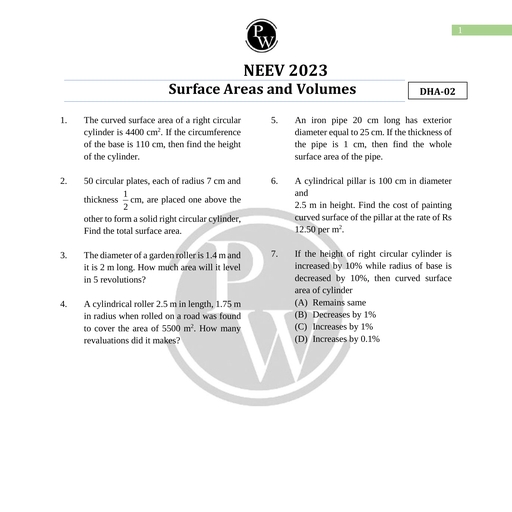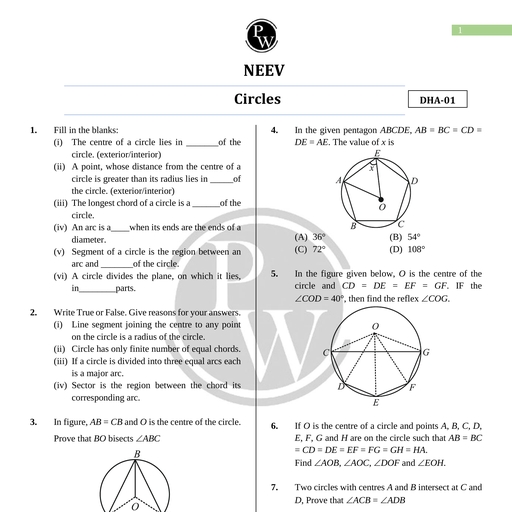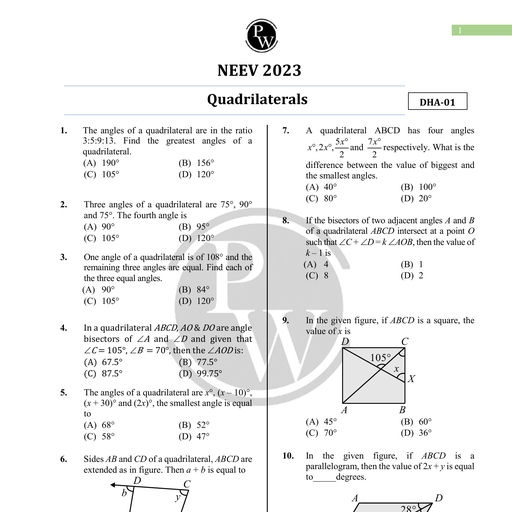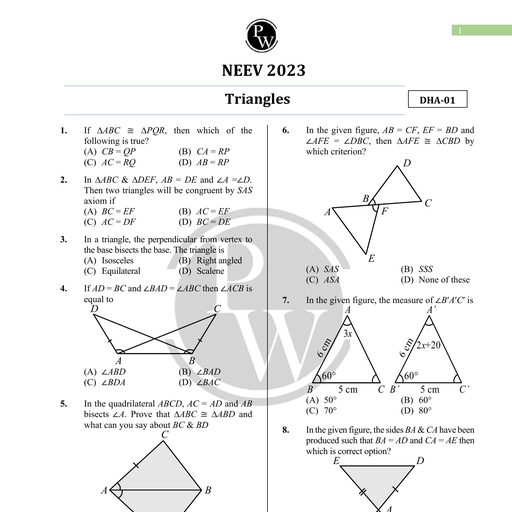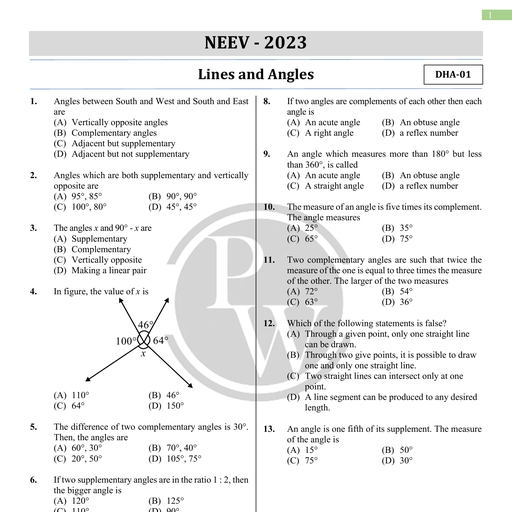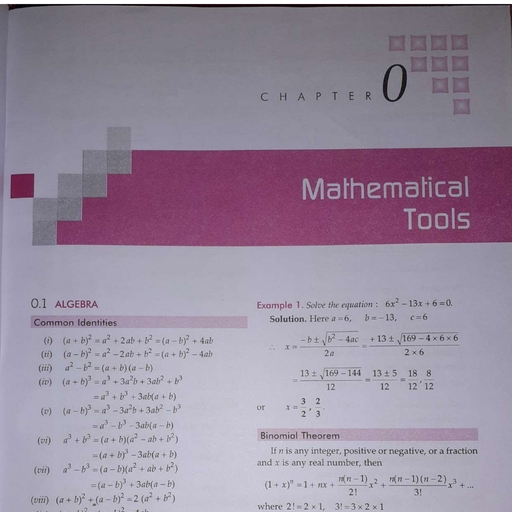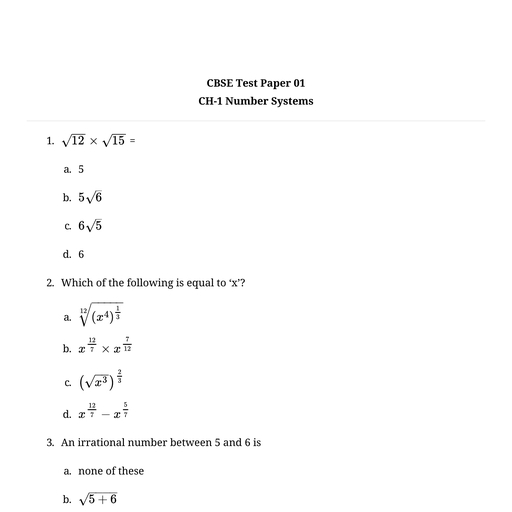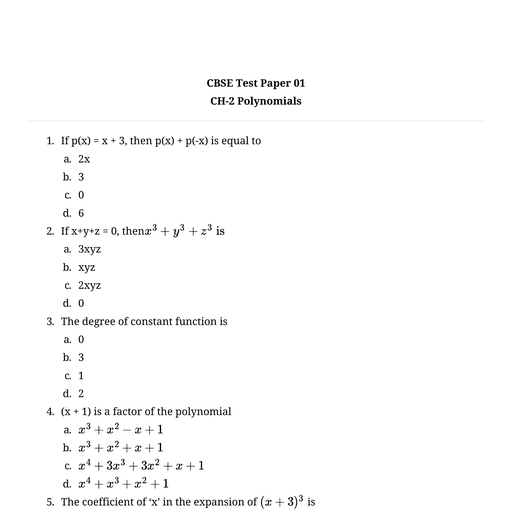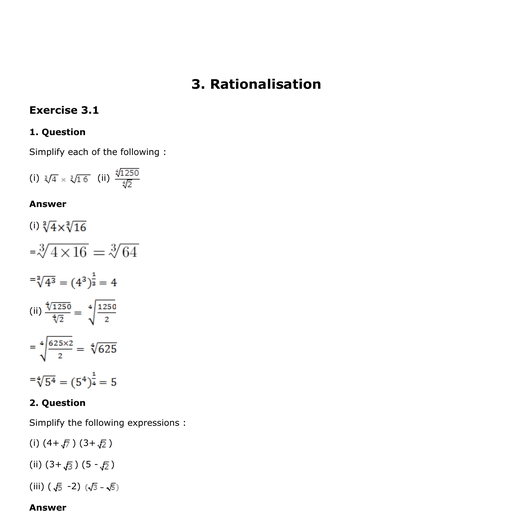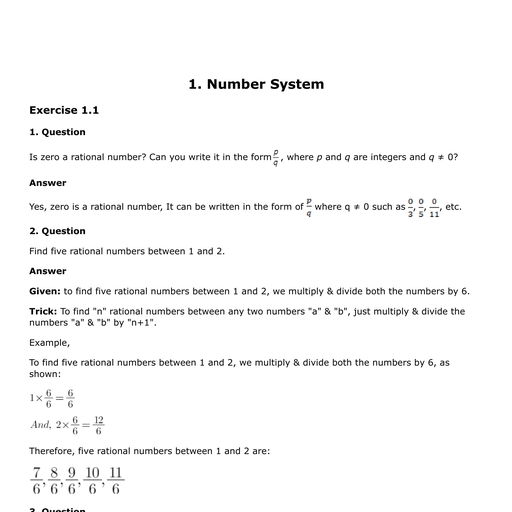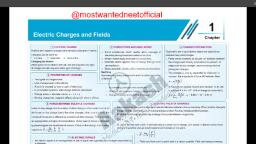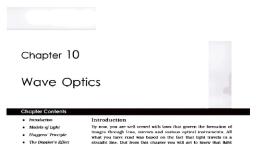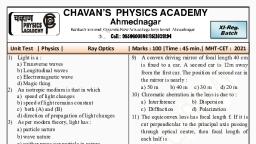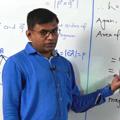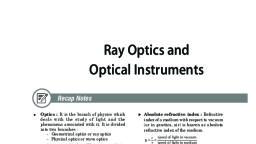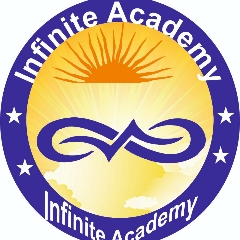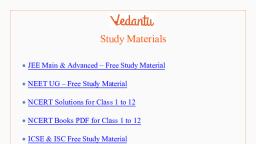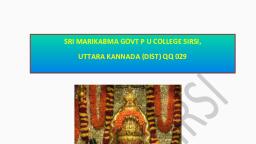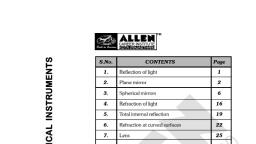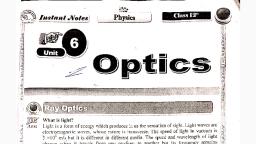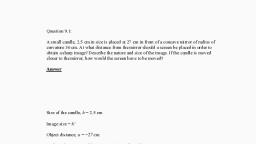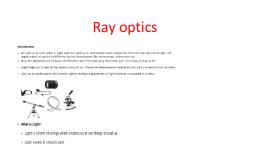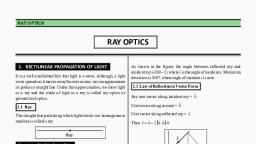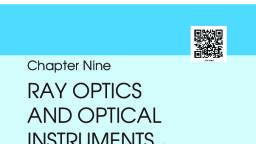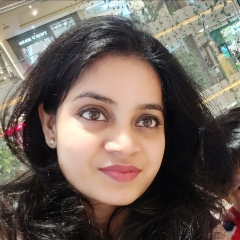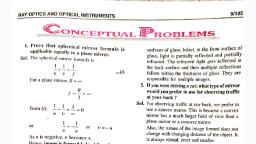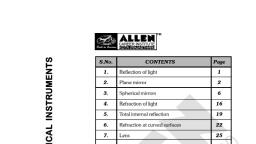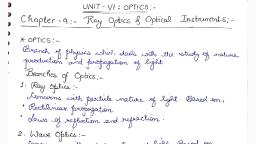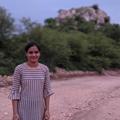Page 1 :
Chapter 9, , Ray Optics and Optical, Instruments, , pter Contents, , ¢ Introduction Introduction, © Reflection of Light by Electromagnetic radiations belonging to the wavelength range about, Spherical Mirrors 400 nm to 750 nm is called light. Human eye (ratina) has the, sensilivity to detect electromagnetic wave of this range., e Refraction, , ¢ Total Internal Reflection, , ¢ Refraction at Spherical, Surfaces, , ¢ Refraction by Lenses, ° Refraction through a Prism, « Dispersion by a Prism, , ¢ Some Natural Phenomena, due (o Sunlight, , e Optical Instruments, ¢ Formulae Chart, © Quick Recap, , Speed of light in vacuum is c = 2.99792458 x 108 ms“! = 3 x 108 ms“!, which is highest speed attainable in nature., , Sir Isaac Newton, held the theory that light was made up of tiny, Particles. In 1678, Dutch Physicist, Christian Huygens, believed that, light was made up of waves vibrating up and down Perpendicular to, the direction of propagation of the light, and therefore formulated a, way of visualising wave propagation. This became known as, “Huygens’ Principle”. Huygens theory was the successful theory of, light wave motion in three dimensions. In a vacuum, or other, uniform media, the light waves are spherical, and these wave, surfaces advance or spread out as they travel at the speed of light., Newton's theory came first, but the theory of Huygens, better, described carly experiments., , At the time, some of the experiments conducted on light theory, both, the Wave theory and Particle theory, had some unexplained, phenomena. Newton could not explain the phenomenon of light, , interference, this forced Newton's particle theory in favour of the, Wave theory., , In 1803, Thomas Young studied the interference of light waves by, shining light through a screen with two slits equally separated, the, , light emerging from the two slits. spread out according to Huygen’s, principle., , Later in 1815, Augustin Fresnel supported Young's experiments with, mathematical calculations., , In 1900 Max Planck proposed the existence of a light quantum, a, finite packet of energy which depends on the frequency., , Aakash Educational Services Pvt. Ltd. - Regd. Office : Aakash Tower, 8, Pusa Road, New Delhi-110005 Ph. 011-47623456
Page 2 :
2 Ray Optics and Optical Instruments Board & Competitive Exams., , In 1905, Albert Einstein had proposed a solution to the problem of observations made on the, behaviour of light having characteristics of both Wave and Particle theory. From work of Planck, on emission of light from hot bodies, Einstein suggested that light is composed of tiny particles, called photons, and each photon has energy., , The wavelength of light is very small comapred to the size of ordinary objects so a light wave can, be considered to travel from one point to other along a straight line joining them. The path is called, ray of light. A bundle of such rays constitute a beam of light. In this chapter we deal with, phenomena of reflection, refraction, dispersion, using ray picture of light. Using the simple law of, reflection and refraction, we shall study the image formation by spherical reflecting surfaces,, spherical refracting surfaces, plane surfaces, optical instruments, including human eye., , REFLECTION OF LIGHT BY SPHERICAL MIRRORS, , The laws of reflection state that the angle of reflection (angle between reflected ray and the normal to the, reflecting surface) equals the angle of incidence (Angle between incident ray and the normal). Also that the, incident ray, reflected ray lie in the same plane with normal to the reflecting surface. These laws are valid at, each point on any reflecting surface whether plane or curved., , , , Incident ray Normal, , i Reflected ray, }, , o, , Mirror, Geometric centre of a spherical mirror is called its pole while that of a spherical lens is called its optical centre., The line joining the pole and centre of curvature of spherical mirror is known as principal axis., , Sign Convention : To derive any formulae for reflection at spherical surfaces we must first adopt a sign, convention for measuring distances. According to Cartesian sign convention all distances are measured from, pole of the mirror., , , , , , , , Upward height Incident, (ve) light (+ve) M, —, | F : Principal axis, c Distance opposite P, , to incident light (-ve), , Distance along, Downward height incident light, (-ve) (+ve), , Concave Mirror, P — Pole ; F — Focus ; C — Centre of Curvature, , PF = f = Focal length of mirror., , CP = R = Radius of curvature of mirror., , The distances measured in the same direction as the incident light are taken as positive and those measured, in the direction opposite to the direction of incident light are taken as negative. Heights measured above, principal axis are taken as positive and the heights below the principal axis are taken as negative., , Aakash Educational Services Pvt. Ltd. - Regd. Office : Aakash Tower, 8, Pusa Road, New Delhi-110005 Ph. 011-47623456
Page 3 :
Board & Competitive Exams. Ray Optics and Optical Instruments 3, , , , Focal Length of Spherical Mirrors, , As we know parallel beam of light ray is incident on a concave or convex mirror as shown in figure, the rays, will converge (appear to diverge) at a point F called principal focus., , Concave Mirror, M, , , , , , In case of a concave mirror the reflected rays will converge at focus F whereas in case of convex mirror the, reflected rays appear to diverge from focus F., , , , , , Where, f = Focal length, = Distance between pole and principal focus, R_ = Radius of curvature of mirror., , From figure 2~MCP =0, ZMFP = 20, MP, , , , tano =, , cP’, , MP, tan20 = FP, Considering when 6 is small tan = 0 ; tan26 ~ 20, eS, FP ~ CP, , , , , , , , , , Aakash Educational Services Pvt. Ltd. - Regd. Office : Aakash Tower, 8, Pusa Road, New Deihi-110005 Ph. 011-47623456
Page 4 :
4 Ray Optics and Optical instruments Board & Competitive Exams., The Mirror Equation, , The rays emanating from a point actually meet at another point after reflection (refraction) is called as the image., Hence, an image is a point-to-point correspondence of object. In practice we can take any two rays emanating, from a point on an object, trace their paths and find the intersection to obtain image., , , , Figure shows the ray diagram of tracing the image A’B’ of an object AB formed by a concave mirror. If u is, object distance and ‘v is image distance and ‘f’ is the focal length from pole ‘P’ then from similar triangles, A’BFE and MPF., , , , AB BF, , ue .(i) Have AB = PM, From right-angled triangles APB and A’PB’, , A’ BP i, , "BA BP =e, , From (i) and (ii), we get, , SF 22, , FP BP, , B'P—FP _B'P, , FP BP, According to sign convention,, BP=-v, FP=-f; BP=-u, pvt evs, -u, , , , — This is called as mirror equation., , For magnification which is the ratio of size of image to object., We have from A’B’P and ABP., , Size of image(-h,) _ BP, Size of object (hj) BP, , , , Aakash Educational Services Pvt. Ltd. - Regd. Office : Aakash Tower, 8, Pusa Road, New Delhi-110005 Ph. 011-47623456
Page 5 :
Board & Competitive Exams. Ray Optics and Optical Instruments 5, , , , « fe, m= fo u (Lateral Magnification), , Though we have derived these relation for concave mirror when real image is formed but it is valid for any curved, mirror and for any type of image., , , , , , 4,1 1, Multiplying both sides of 7 + 7 = — by u, We get, , , , , , , , , , , , , , , , , , It is also called superficial magnification., (3) Newton's formula : For spherical mirrors, let, x = distance of the object from the focus, y = distance of the image from the focus, Then putting u = f + x, v = f+ y in the mirror formula,, 1.1 1, wean Fax * Fey ~F, 2f+x+y 4, eo NEY) OF, or, = 2f2 + {x + y)=f2 + x+y) + xy, , o, , Aakash Educational Services Pvt. Ltd. - Regd. Office : Aakash Tower, 8, Pusa Road, New Deihi-110005 Ph. 011-47623456

